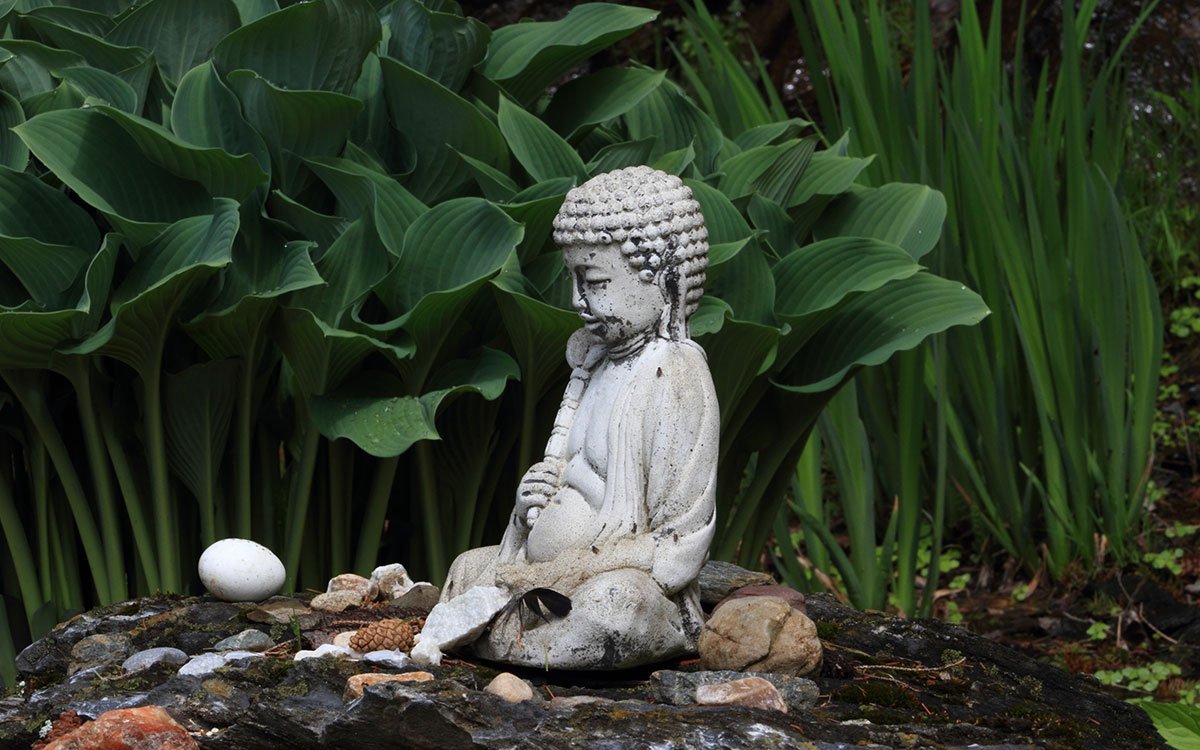Establishing Our Own Inner Secure Base

May 17, 2020
In 2004, I heard Phil Shaver present to the Dalai Lama on John Bowlby’s model of a “secure base.” Bowlby, one of the most influential forces in child development, said that caretakers create a secure base for a child if they empathize, tune in to the child’s needs, and let the child know that they are there as a safe haven during upsets or to soothe anxiety and worry.
I had an epiphany that we can each turn toward an inner secure base. In today’s challenging times, we can all use such a thing.
Shaver’s research focused on how our experience of a secure base in childhood, for better or worse, shapes our closest adult relationships. His research, done with Mario Milkunicer, looked at ways we could prime feelings of a secure base by, for example, looking at photos of loved ones. As Shaver has found, those photos of loved ones we put on our desk are momentary secure base primes, as are even just hearing words like “love” or “hug,” or seeing a photo of a mom cradling her baby.
Then there’s being with the right person—the one who comes to mind when you ask yourself who you like to spend time with, whom you turn to for comfort when you’re upset, or who you feel you can always count on. A relationship can itself be reparative if we find a loving partner or loyal friend who fulfills the secure base needs that were unmet in childhood.
But there’s another way to access that inner secure base: through spiritual and psychological practices. As I reflected on what Shaver said at that 2004 meeting, I saw how this related to the years of integrating awareness and compassion perspectives and practices I had done, inspired by and drawn from ancient Eastern wisdom traditions, as well as some Western psychotherapeutic approaches. These practices, too, I realized, were like the secure base primes Shaver described.
Priming the Inner Secure Base
I began to incorporate this integration of Eastern and Western psychologies and the inner secure base model into my psychotherapy practice, and I still teach it today in workshops I offer with my husband, Daniel Goleman. As I put it in my 2013 book Mind Whispering, “It can make a huge difference to have someone who cares about us when our primal needs are unmet. But if there is no such other person, it’s not too late to connect with those qualities within our own minds and hearts.”
In this sense, there can be two doors to the secure base—one inner and the other outer. While we can turn to loving people to prime this mode, we can also look inward. There are numerous ways to nurture these inner qualities by creating the conditions for this inner safe haven to flourish. Among the many paths are connecting genuinely with others, and so connecting genuinely within ourselves; acts of kindness; clear communication; caring concern; and empathic attunement. All these prime our own secure base. So do nurturing our positive qualities, finding meaning in our lives, and seeing things with a clear discernment, rather than through a distorted lens.
An inner connection can be nurturing, independent of outer relationships. We can strengthen our inner secure base by bringing to mind an inspiring leader or teacher, or friends. Yoga or tai chi, for example, can be connections to our inner secure base, as can simply being in nature. I’ve found that there are many meditation practices that cultivate these qualities. In this sense, meditation—particularly awareness and compassion practices—can act as an inner re-parenting, whether or not we have experienced an adequate secure base early in our life. As one student of mine put it, “A nurturing awareness is like a secure base that I never felt in childhood.”
Not to downplay the gravity of our current pandemic and the devastating effects it is having throughout our world, but we are not helpless when it comes to how all that impacts our minds. The more we can turn to these internal paths, the greater our confidence grows in our inner resources. Transforming our own minds and hearts allows this life-enhancing inner secure base to surface more and more. Eventually it might become our default mode, the state we return to habitually. As we transform our perspective, our inner secure base can become a safe refuge, one we always can turn to.
Our Shared Secure Base
Our inner secure base can also be a soothing influence on those around us. Such emotions are more contagious the more stable we are in our own compassionate awareness. And radiating this inner security outward to those we connect with is itself a form of kindhearted generosity, which can feel like a soothing balm in the face of hardship. As we turn to each other, sharing stories of losses and hardships, learning from and leaning on each other, a sincere trust evolves and we start to feel more and more like a bonded community. Sharing our vulnerabilities as well as our triumphs in facing adversity, we create the foundation for a shared secure base.
In dealing with tragic circumstances like this global pandemic, there’s a sudden dropping away of a sense of a separate self as people rush to help in different ways. It’s as though we humans became one organism and when one part is in danger, other parts come to the rescue, like immune cells streaming to the site of an infection. As the Dalai Lama puts it, “The space of awareness is small, so our personal distress looms large. But the moment you think of helping others, the mind expands and our own problems seem smaller.”
The principle of interconnection is not just some abstract principle, but real and immediate—a natural human quality that is always available to us. My sincere hope is that when the tragedy of this pandemic subsides and we return to our “normal” lives, that rather than falling back into our habits of complacency, we will continue to live in closer alignment with a spirit of interconnection—with each other and with the natural world.
Tara Bennett-Goleman, MA, is a teacher, psychotherapist, and author of the New York Times best-seller Emotional Alchemy and also of Mind Whispering.
Full Bio and Programs